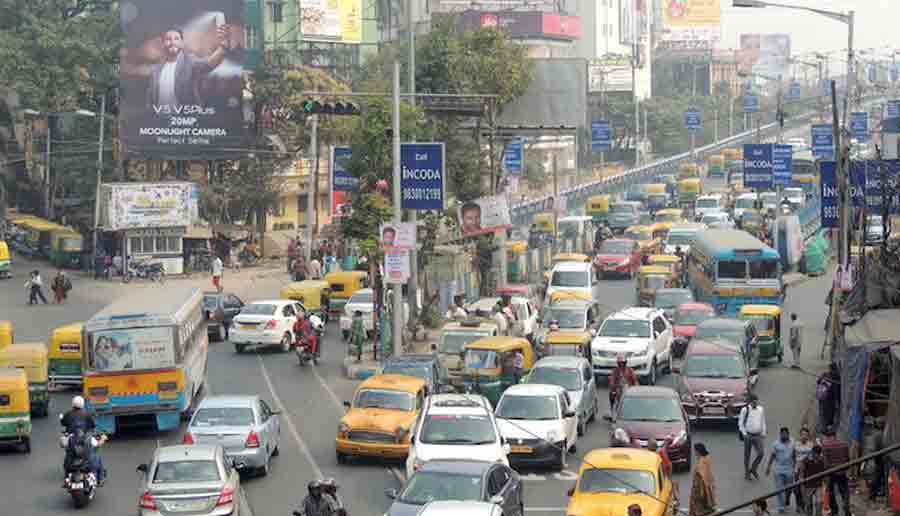The level of the most toxic air pollutant — PM 2.5 — in Kolkata's air has inched closer to pre-Covid times after a lockdown-triggered low in 2020, shows an analysis by the Delhi-based Centre for Science and Environment (CSE).
The analysis, released on Monday, was carried out on the basis of real-time air pollution data generated by the central pollution control board (CPCB) in seven stations across the city during the period of 2019 to 2021.
The analysis found that the annual average of PM 2.5 pollution in Kolkata had jumped from 48 micrograms per cubic metre in 2020 to 56 micrograms in 2021.
The city’s PM 2.5 level in 2019, before Covid, was 69 micrograms.
The national limit is 40 micrograms while the World Health Organisation’s recently set annual standard for PM 2.5 is 5 micrograms. PM 2.5 is the tiniest particle that can enter the deep crevices in lungs and trigger several diseases, including fatal ones like cancer.
Another air pollution analysis, independently carried out by Delhi-based Climate Trend also corroborates the same trend. Though the analysis — based on the National Clean Air Programme — indicated that the 2021 level has touched the 2019 level.
CSE analysis shows that adjoining Howrah’s PM 2.5 pollution follows the similar trend with its 2021 annual average — 61 micrograms –— increased over 2020 average of 54 micrograms but still less than its the 2019 pollution level of 74 micrograms.
“This analysis of real-time air quality data for the period 2019-2021 shows that the downward dip in pollution that was induced by the lockdown in 2020 is threatening to bounce back. The levels in 2021 are already rising,” Anumita Roychowdhury, the executive director of CSE told Metro.
However, Roychowdhury pointed out that in Kolkata and elsewhere, the levels were still lower than 2019 which “underscores the urgency of scaling up action across all sectors to prevent further worsening and to arrest the trend”.
Clearly, the trend is continuing as this newspaper found that on Monday, the air quality indices in all the stations across the city ranged between poor and very poor and PM 2.5 was the responsible pollutant for the surge.
“The winter smog that engulfs north India during early November begins to extend eastwards during late December … mostly during this time when winter inversion and the cool and calm conditions trap the local pollution that is already high,” said the report.
The CSE report pointed out that Kolkata had 53 “poor” air quality days in 2021.
Kalyan Rudra, the chairman of state pollution control board, however, said: “We should not compare 2020 with any prior or after year. There was a lockdown and the PM 2.5 level in the city got significantly reduced.”
“Through our analyses we are now understanding that the rise in PM 2.5 level in Kolkata during the winter is not exclusively because of local sources of air pollution. Kolkata and the rest of West Bengal, being at the tail end of the Indo-Gangetic plains, receives a huge pollution load from the northern part of the country during this period,” the chairman said.
